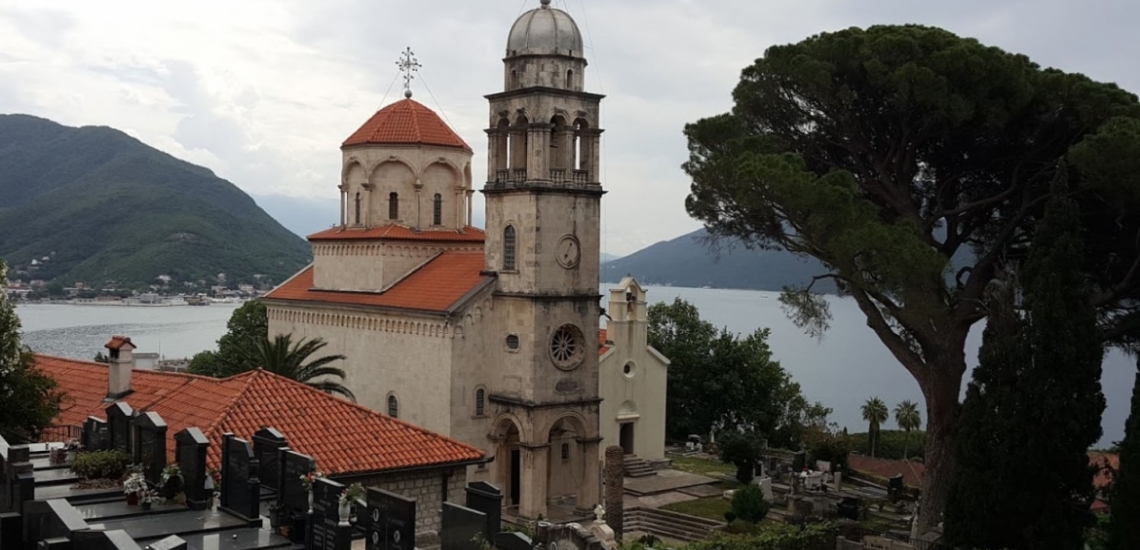The Savina Monastery is located in the Eastern part of Herceg Novi. It's named in honor of Archbishop Sava, one of the most worshipped dieties of the Serbian Orthodox Church, who built a small church in this town in the XIII century.
The monastery complex consists of three churches: the small Church of the Assumption, the Great Temple of the Assumption and the Church of St. Sava. There's also two burial sites on the grounds of the monastery.
The Small Church of the Assumption is presumed to be built in 1030. Inside it's decorated by frescos dated at around XV-XVI centuries. The church underwent extensive renovation from the late-XVII to mid-XIX century.
The Great Temple of the Assumption was built from 1777 to 1799, overseen by Nikola Foretic. This is where the main relic of the monastry is held — the icon of St. Mary of Sava. There's a legend that prayers to this icon saved the city from being razed by the Venician army in the XVIII century. When an enemy ship approached the temple and prepared to destroy it, the gathered citizens and monks started praying to the icon to save the church. Then heavy rain and thunder started, and a lightning struck the ship; it set on fire, killing everyone on board and repelling the attack.
Aside from the icon of St.Mary of Sava, the temple is decorated by varioys icons of Russian, Italian and Greek masters.
Slightly away from the Churches of the Assumption, near the upper burial site, is where the Church of St. Sava is located. It's presumed to be built in the XIII century by the deity himself. It was renovated two centuries later.
A couple of holy relics are contained within the walls of the monastery: the ashes of Serbian tsaritsa Elena, Apostle Thomas and St. George, as well as the crystal crucifix of St. Sava and certain items brought by Serbian and Bosnian monks in the XVII century. The monastery's library contains over 5000 texts, including a handwritten copy of the Gospel dated to 1375, as well as an alphabet book printed in Russia in late-XVII century that was used by the great Montenegran poet and Metropolitan bishop Petar II Njegos.
The monastery also hosts a museum.

